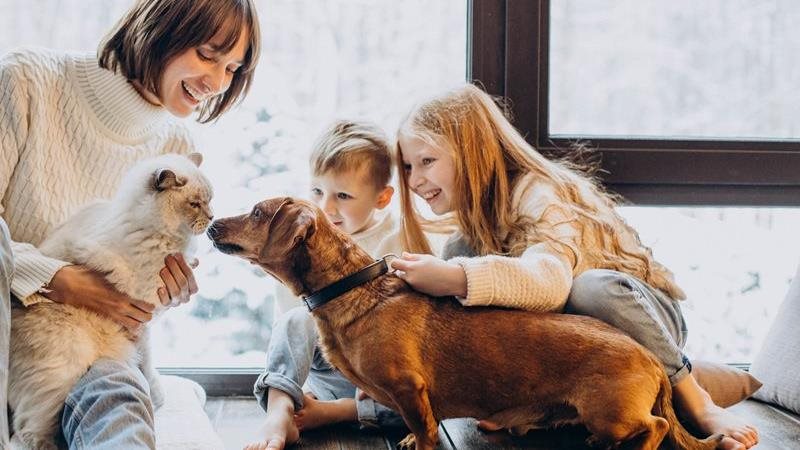
Bringing a pet into your life is exciting, but it’s also a big commitment. If you’re asking yourself should I get a dog or should I get a cat? You’re not alone. Many future pet parents wrestle with the dog or cat question, and the answer depends on your lifestyle, personality and what kind of companion you’re looking for.
Both cats and dogs offer love, loyalty and laughs, but they have different needs and tendencies. Understanding those differences can help you make the best choice for you and your household.
Cat or dog: what's the right fit for you?
Start by thinking about your daily routine. Dogs are social animals that thrive on interaction, structure and physical activity. They need regular walks, training and playtime. If you’re active, home often and enjoy outdoor adventures, a dog might be a great match.
Cats, on the other hand, are more independent. They’re usually content with indoor play, cozy naps and occasional cuddles. If you work long hours, live in a smaller space or prefer a quieter companion, a cat may be easier to care for.
Questions to ask yourself:
-
How much time can I dedicate to a pet each day?
-
Do I want a pet that needs outdoor exercise?
-
Am I okay with litter boxes or daily walks?
-
Do I prefer a pet that’s more independent or more social?
Should I get a dog?
Dogs are loyal, affectionate and often eager to please. They’re great for families, singles and seniors alike, as long as you’re ready for the responsibility! Puppies especially require time, patience and training. Be prepared for some of your favourite shoes or pieces of furniture to be chewed on.
Dogs also vary widely in size, temperament and energy level. Some breeds are high-energy and need lots of stimulation, while others are more laid-back. If you’re considering buying from a breeder, make sure to do your research on finding a responsible breeder!
Should I get a cat?
Cats are low maintenance in many ways. They groom themselves, use a litter box and don’t need to be walked. They’re also great for apartment living and tend to be quieter than dogs.
That said, cats still need enrichment, play and regular vet care. If you're looking for a calm, affectionate companion who respects your space, a cat might be the right choice.
Cats can be playful, curious and cuddly, but they also value their independence. If you’re okay with a pet that may not always want attention, a cat could be a perfect fit. Are you okay with your furniture being scratched? This tends to be one of their favourite past times.
Consider the cost of pet ownership
Whether you choose a dog or cat, pet ownership comes with financial responsibilities. Food, grooming, toys, vet visits and pet insurance all add up. Dogs often cost more due to training, boarding and grooming needs, but cats have their own expenses too.
To get a better idea of what to expect, check out our breakdown of pet costs!
Adoption vs. buying
Adopting from a shelter or rescue is a great way to give a pet a second chance. Many animals are already spayed or neutered, vaccinated and socialized. Plus, adoption fees are usually lower than buying from a breeder.
If you do choose to buy, make sure the breeder is ethical and prioritizes the health and well-being of their animals.
Other things to consider
-
Time commitment: Dogs often require more hands-on care than cats.
-
Space: Larger dogs need room to roam, while cats are usually fine in smaller homes.
-
Allergies: Some people are more sensitive to cat dander than dog fur.
-
Travel: Cats are generally easier to leave at home with a sitter, while dogs may need boarding or travel arrangements.
How Petsecure can help
No matter which type of pet you choose, Petsecure is here to help protect your new family member. Our pet insurance plans cover unexpected vet visits, accidents and illnesses, so you can focus on living your best life with your dog or cat. From routine care to emergency treatment, we’ve got you covered!
Final thoughts: dog or cat?
There’s no one-size-fits-all answer to the cat or dog question. It depends on your lifestyle, preferences and what kind of relationship you’re looking for with your pet. Whether you’re leaning toward a playful pup or a chill kitty, the most important thing is to choose a pet you can commit to and care for long-term.
Still wondering, should I get a dog or should I get a cat? Take your time, do your research and trust your instincts. The right pet will bring so much joy and unconditional love to your home! Petsecure will be there to support you every step of the way with comprehensive plans made for real pet needs.
Get your free, personalized quote for your dog or cat!
